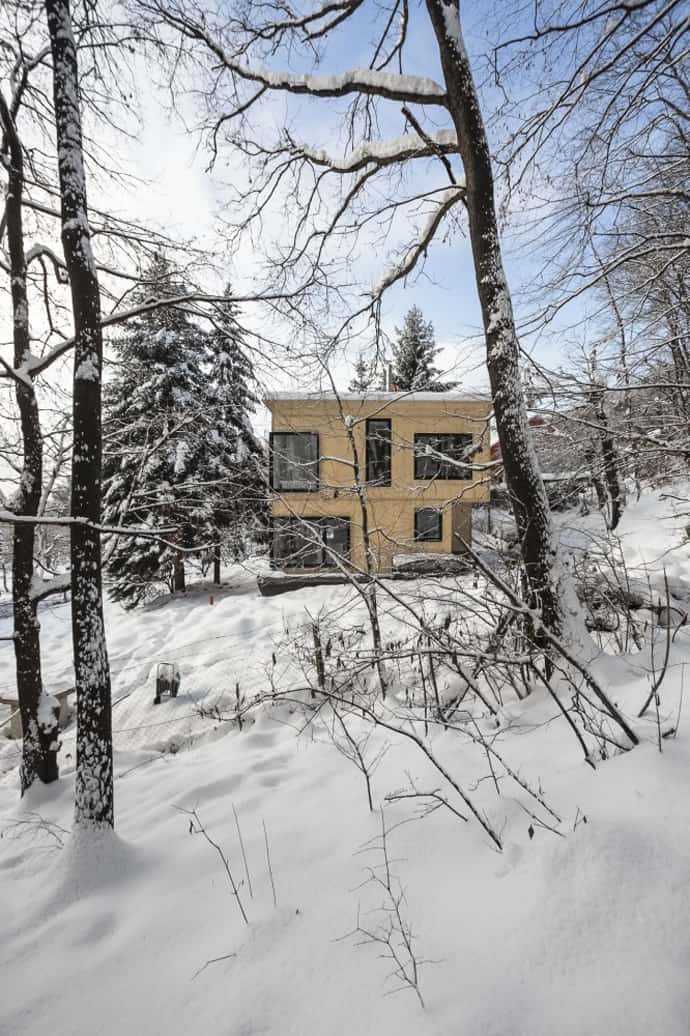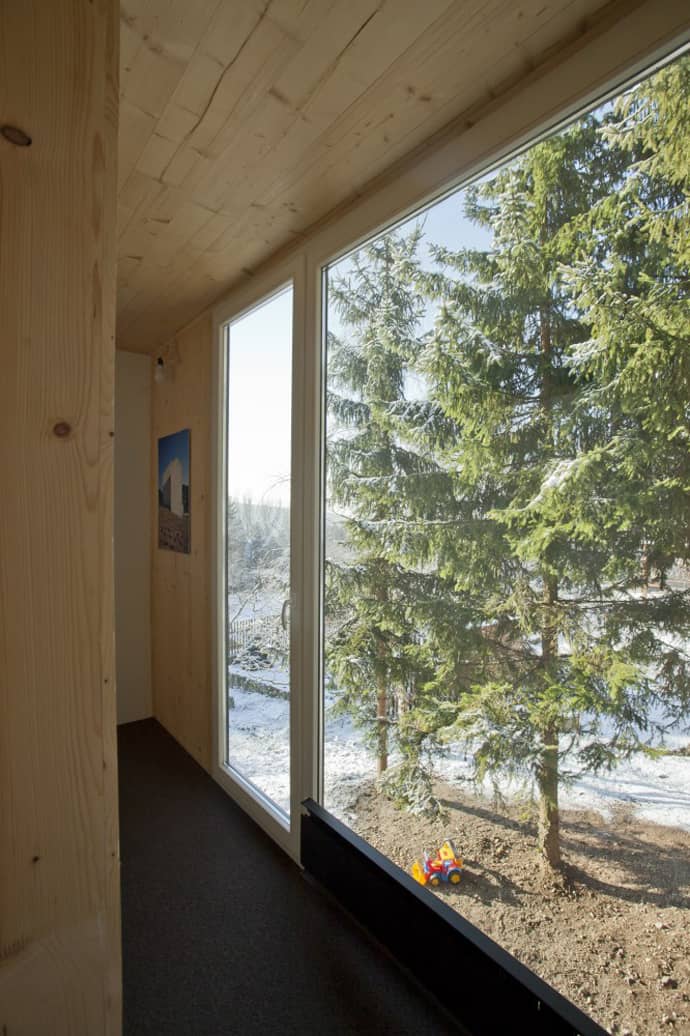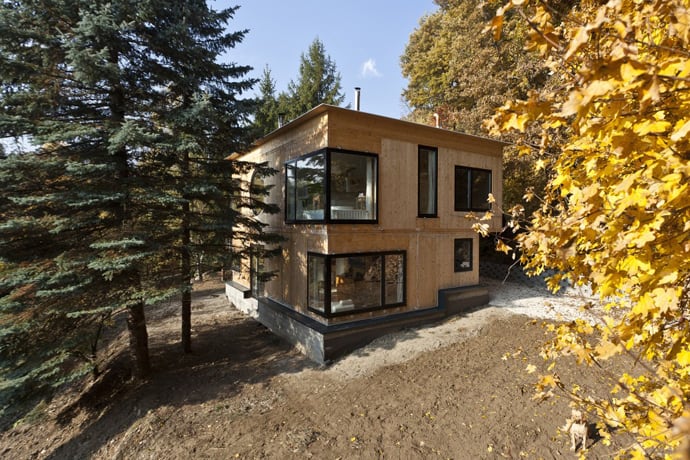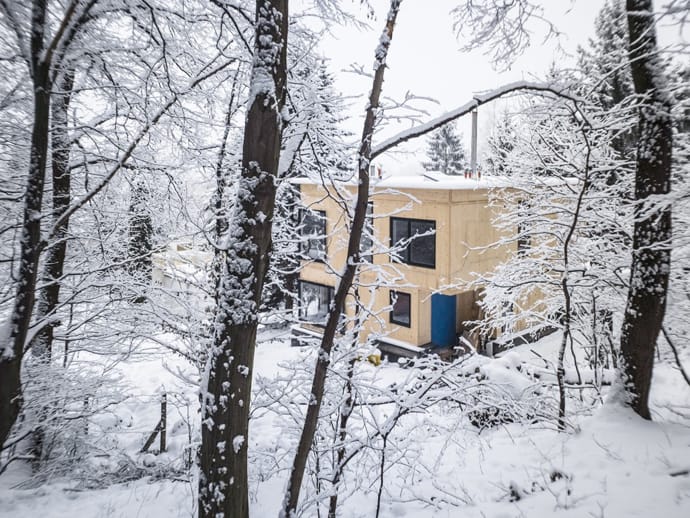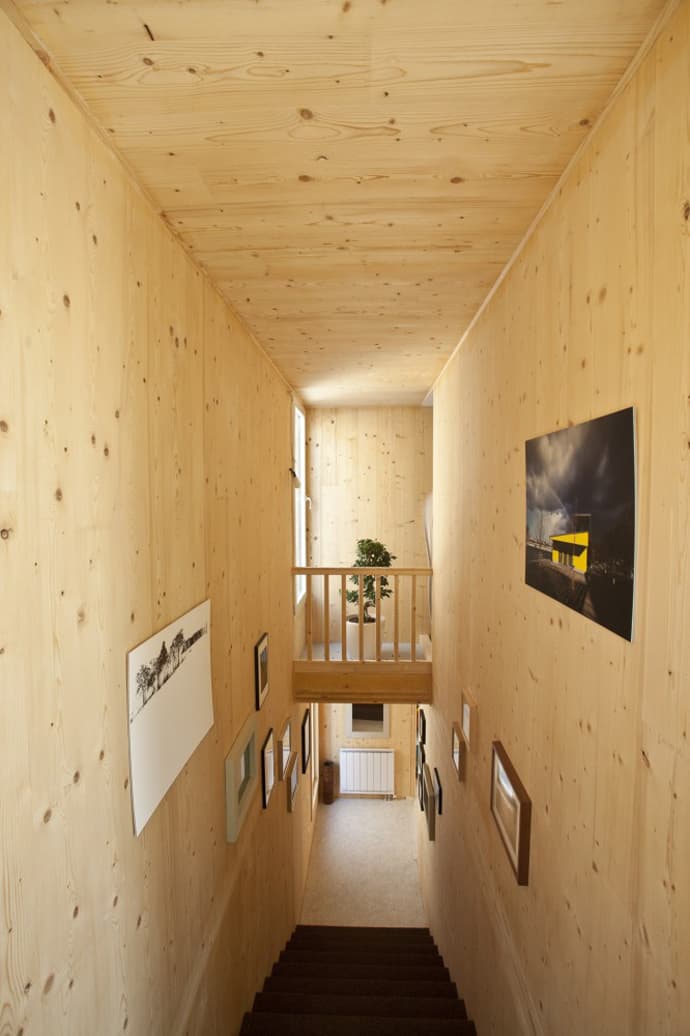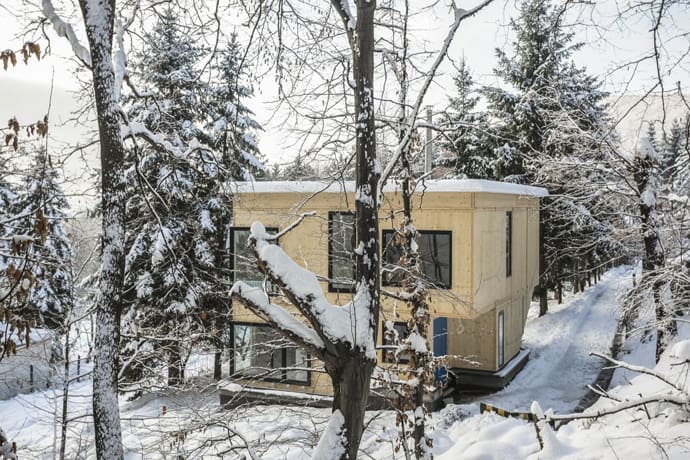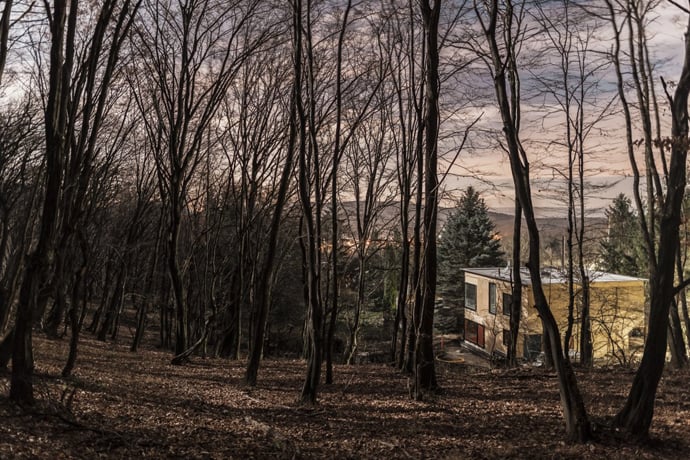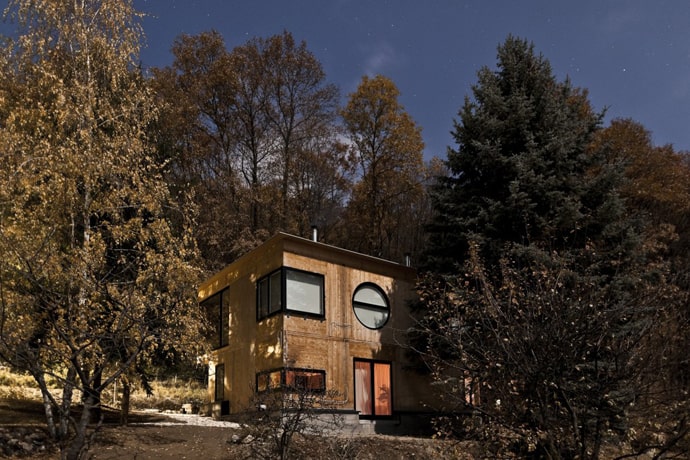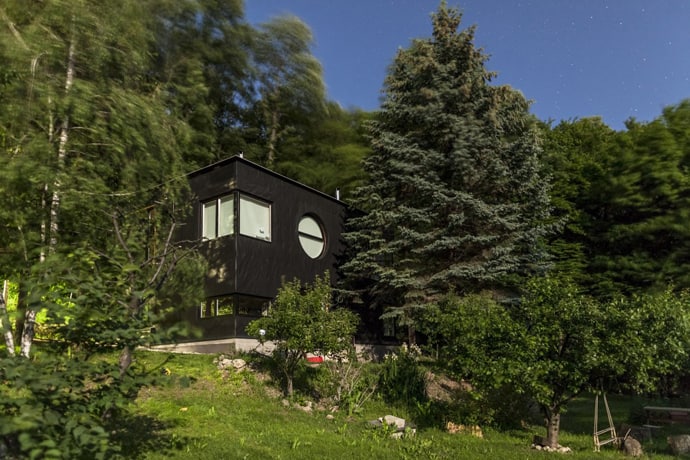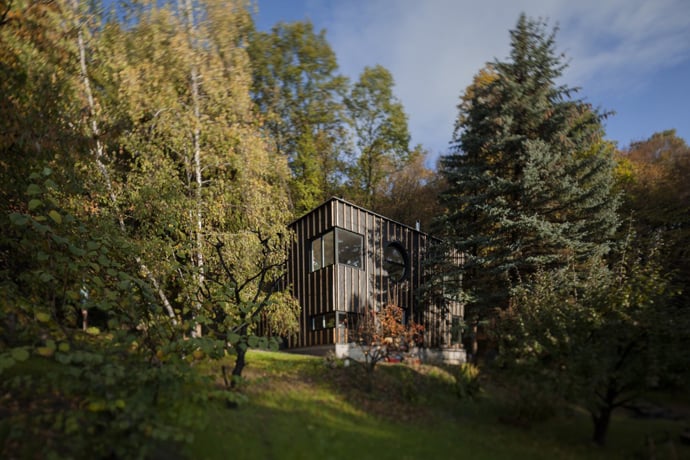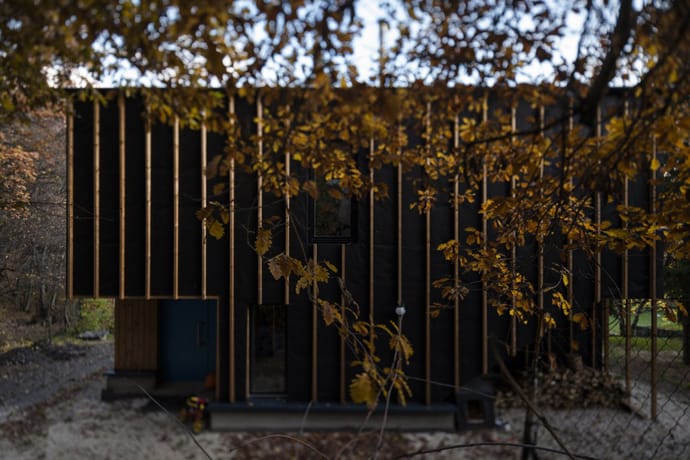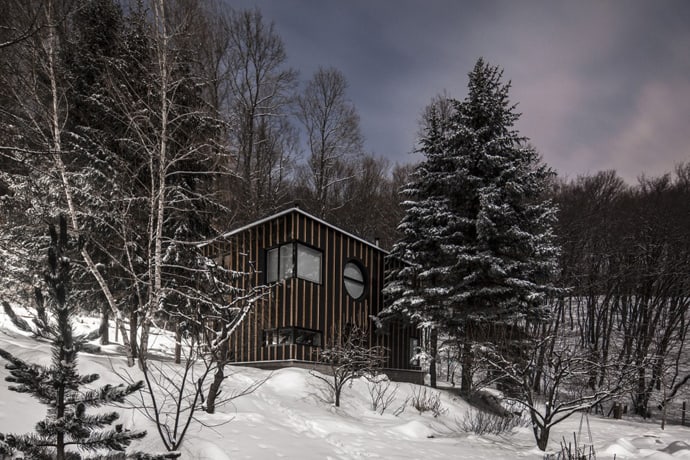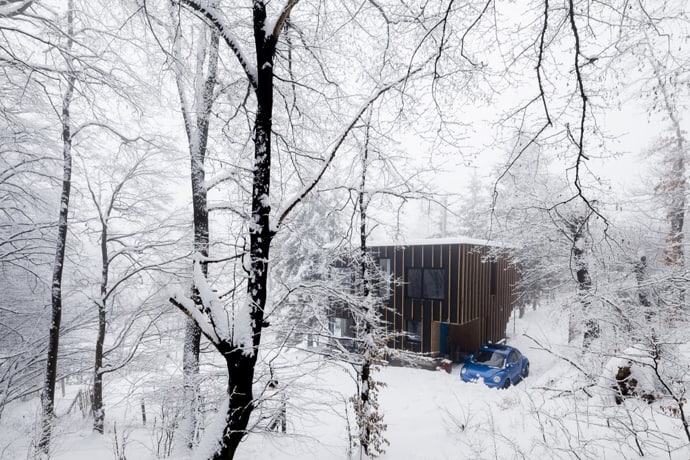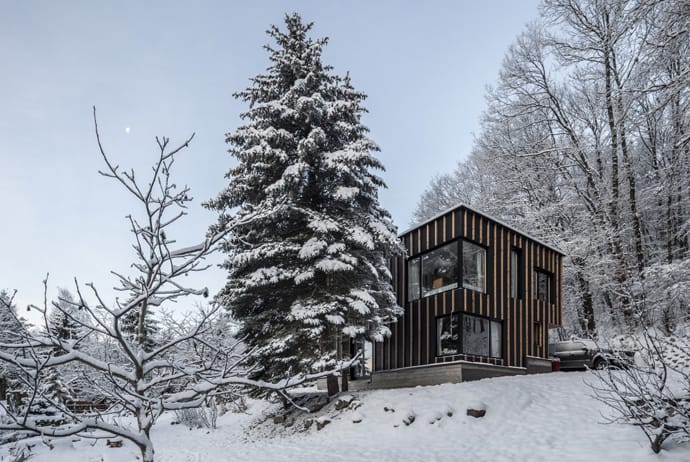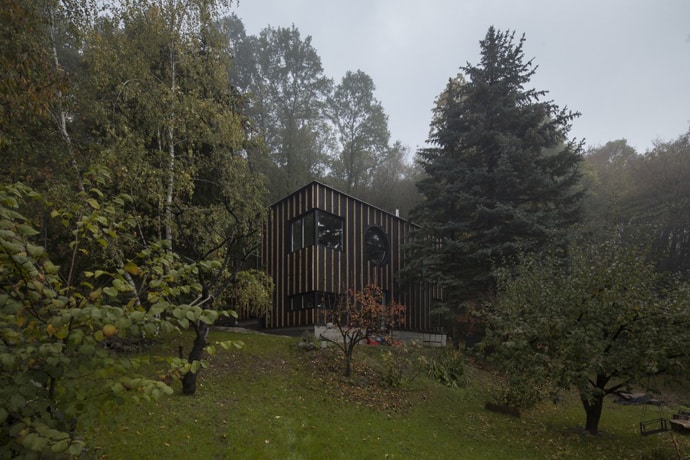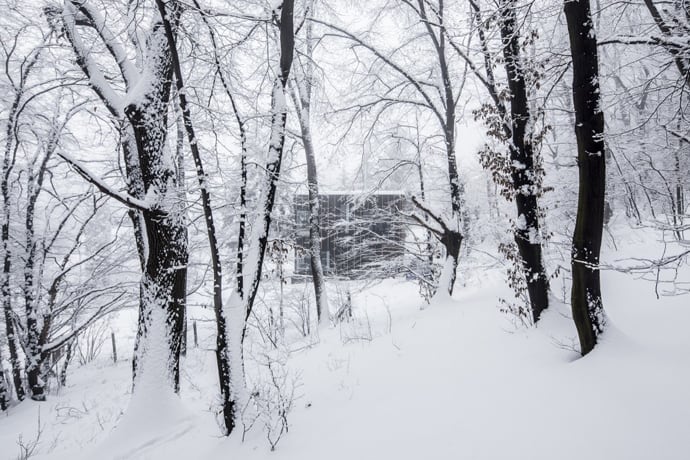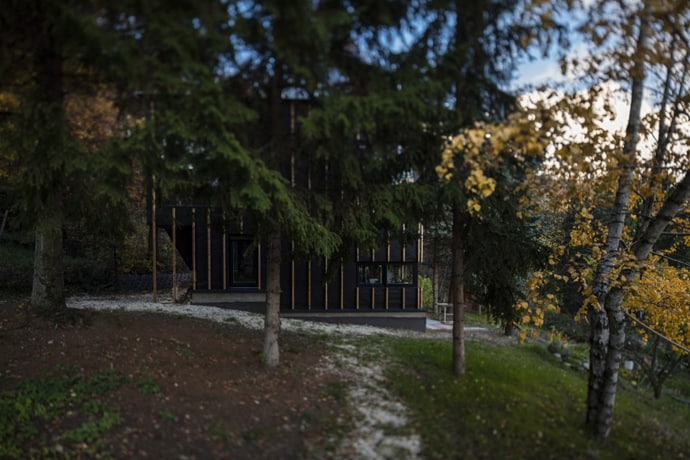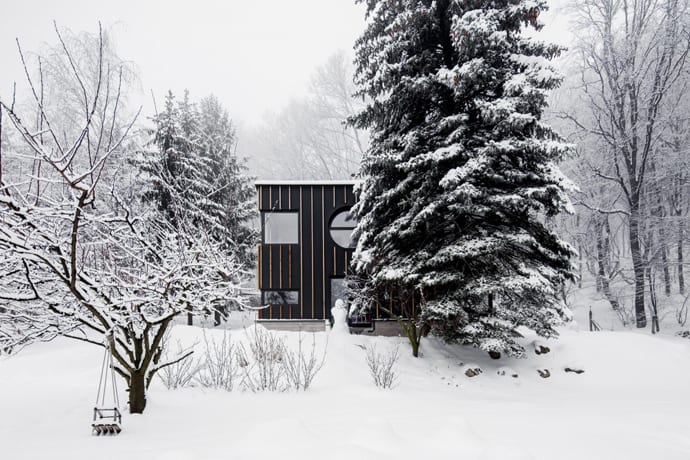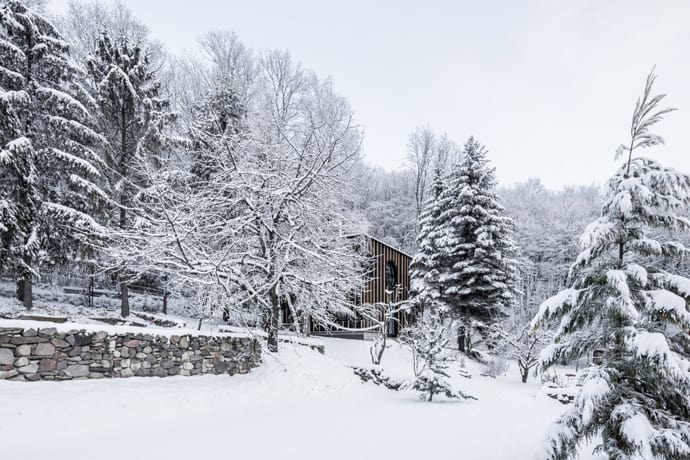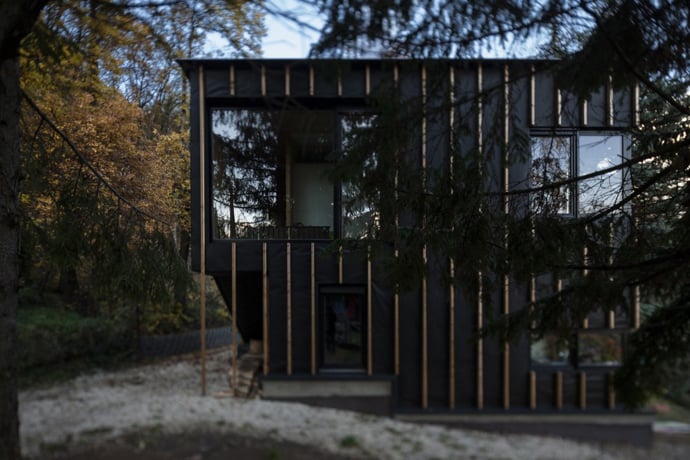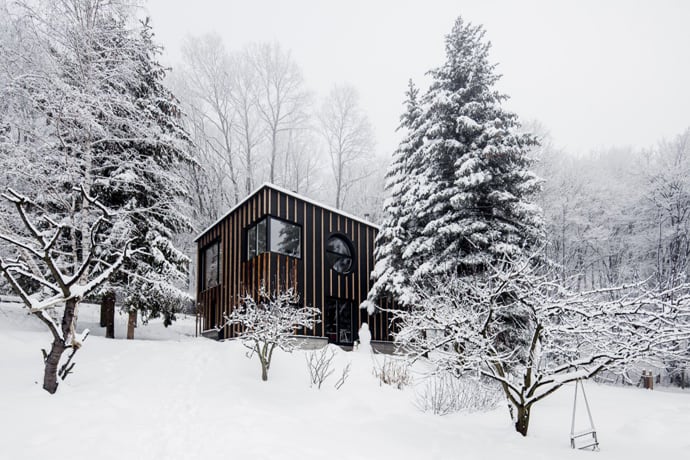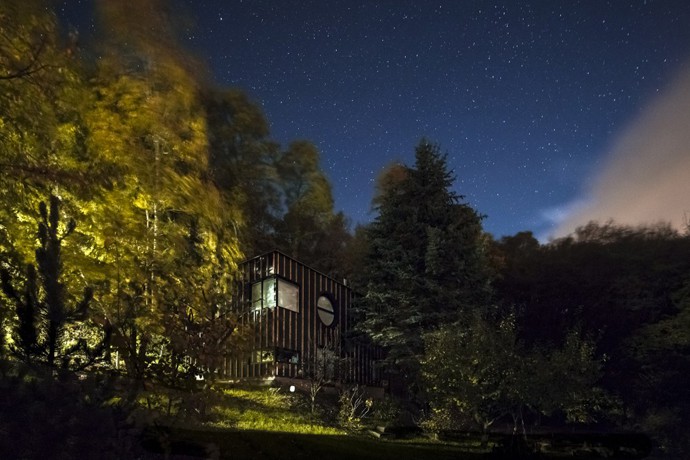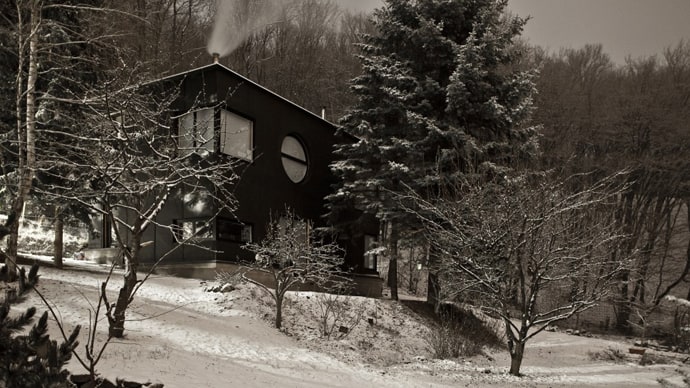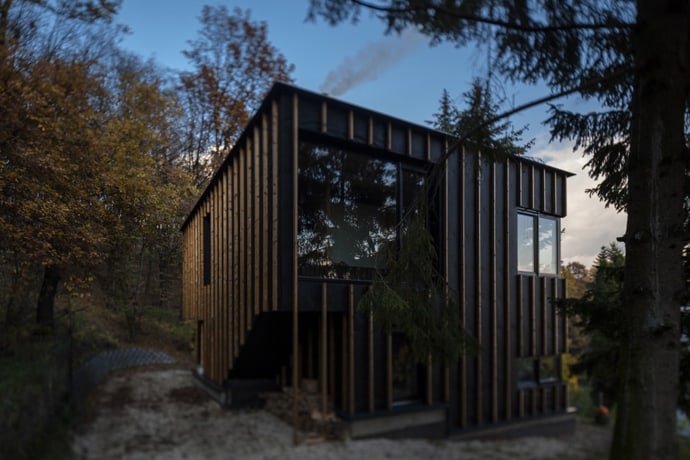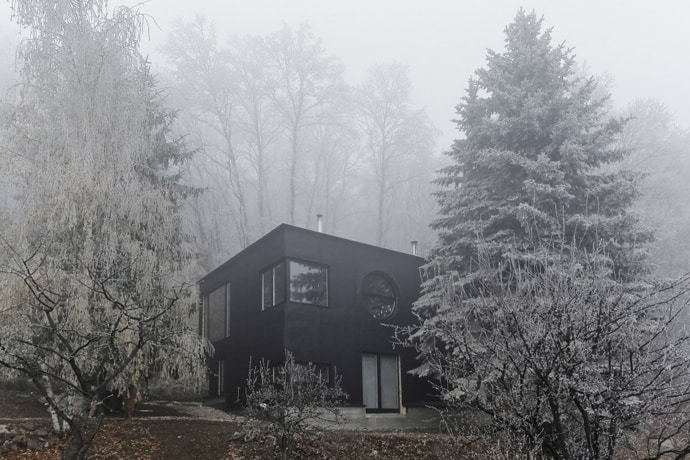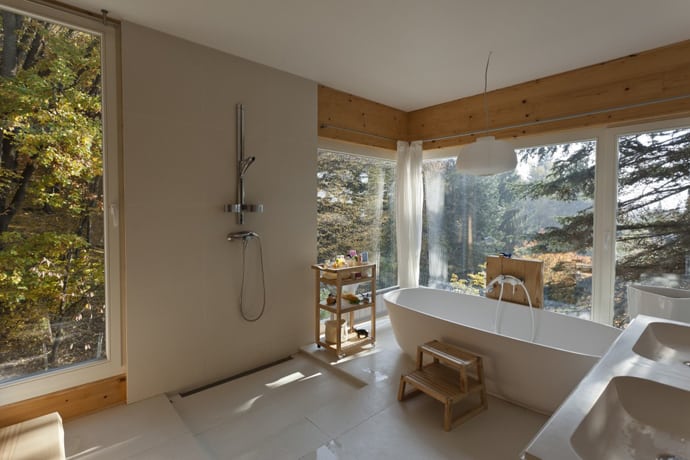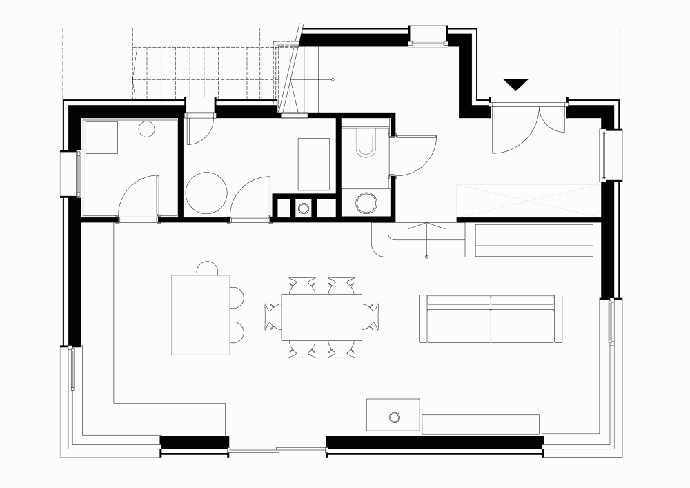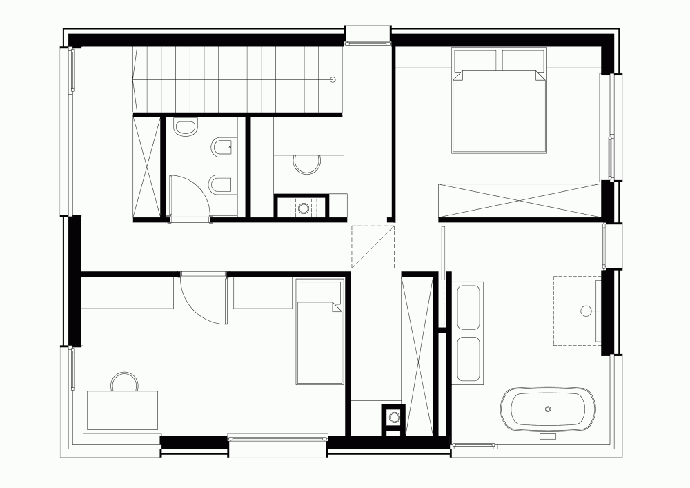DEsigned by T2.a Architects, the structural framework of the House comprises prefabricated, laminated and glued timber panels. From the outside it is a little bit rough and unplaned but from the inside it is smooth, soft and warm. There was no question about using this as a construction material for the House by the edge of the Woods. A mere week (!) passed between sending the digital data to the manufacturer and the completion of structural assembly on site. After finalising the factory drawings manufacturing took two days, the elements were delivered in one day and the House was assembled in another two days. It was a quick, clean and straightforward job, spiced with some excitement (see the film: The Truck Crane in the Woods).
The House is in a constant conversation with its new cotenant, the Woods. Cohabitation has by now turned into a solid marriage and their days, months and years spent together are recorded by the Photographer on a daily basis in every season. He sometimes composes decent, pre-set pictures but is never shy to play the paparazzo and catch them in the middle of the night or under the streetlights. That said, in Batár’s pictures, similarly to those of Gregory Crewdsons’, even artificial / public lighting plays an important role. The theme, i.e. the House and the Woods have slowly acquired the status of Muse and now serve as an inspiration of photographic art. The series of pictures tell about intimacy, understanding and personality and form, as independent creations, a genuine milestone in the artist’s career.

